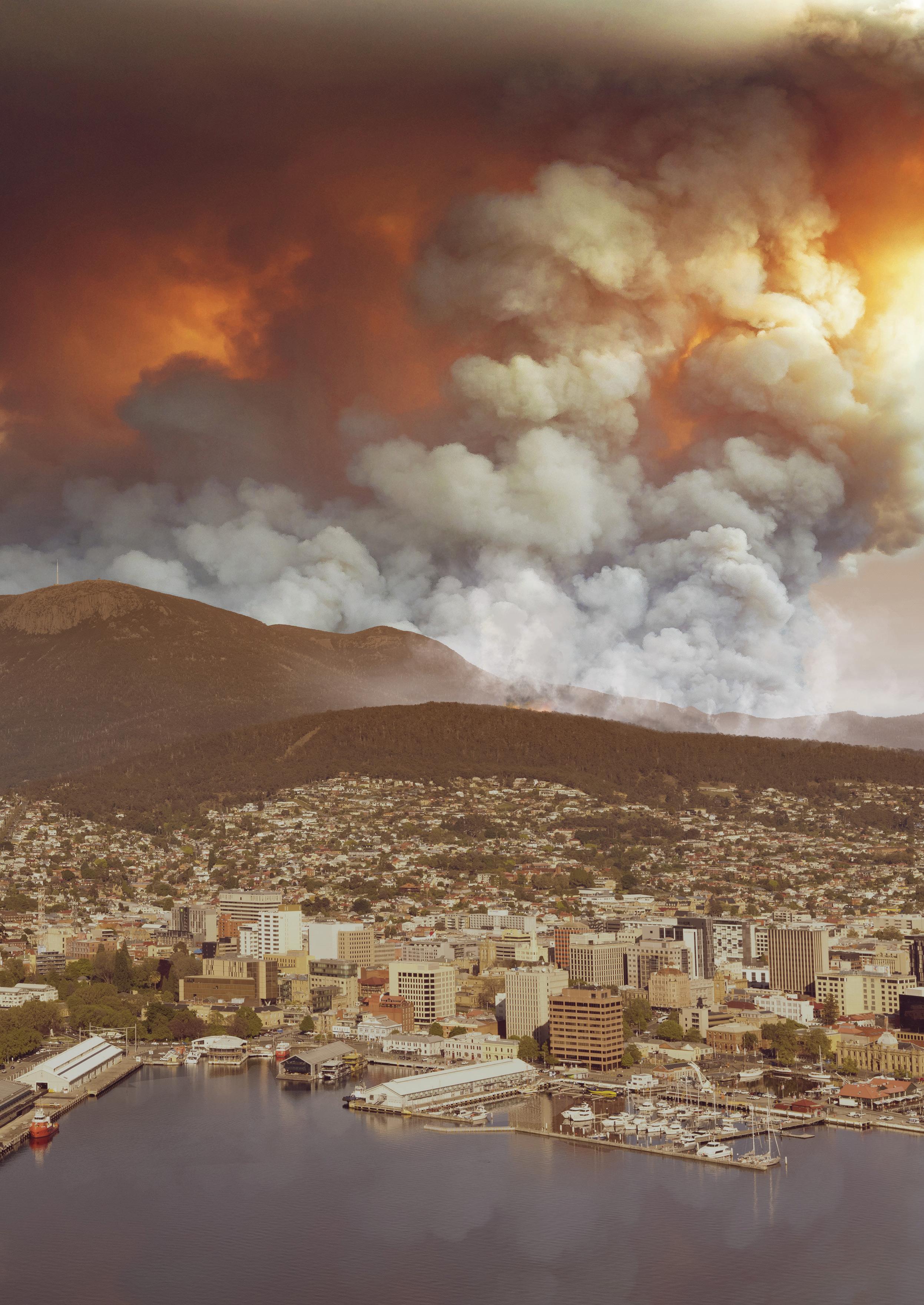
3 minute read
Bushfire season
Australia’s Bureau of Meteorology tells us Hobart experienced slightly higher than average winter temperatures and slightly below average rainfall this year.
It also tells us southeast Tasmania continues to suffer from low soil moisture.
But ask anyone in Hobart about the winter weather and they will tell you it has been wetter than normal.
It’s a disjunct that can easily lull us into a false sense of security, but make no mistake, a burst of hot weather will quickly cure the tall grasses around Hobart and bring home the reality of this year’s bushfire season.
So what are the chances of bushfires over summer? We will have bushfires, that is simply part of living in Australia, and we may well have them close by, that is part of living close to bushland. But will they be bad?
Given winter and spring weather conditions we can expect a more temperate bushfire season this year. However, these same conditions have been great for the growth of grass, making fast-moving grassfires a major concern once summer warms up. And warm up it will.
As we move into summer, ground litter will dry out, as will the outer fibres of trees such as stringybarks. Grasses will also dry out, and remember, even green grass burns fiercely. The cured grass, dry ground litter and stringybark fibres are all fuel that can ignite during lightning strikes or be lit from campfire escapes, among other potential sources of ignition.
So yes, we will have bushfires. There is a possibility they will not be as bad as in recent years, but the important thing is to be prepared. Clean up the rubbish and litter around your house and in your gutters. Prepare a household bushfire response plan and practice it. It is much better to trial your plan when you are not under pressure and find out what works and does not work for you and your family.
Take the time to do these things now. Don’t wait until the last minute. Remember, the most important part of your plan is to leave early and to have an agreed trigger that tells you it is time to leave.

Photo worth a thousand words
This digitised image depicts Hobart just hours before a massive bushfire hits the city’s outskirts and was created to show people the frightening realities of a severe to catastrophic bushfire.
The image shows a huge column of smoke just behind the summit of kunanyi/Mt Wellington, with spot fires already setting fire to bushland just behind West Hobart and New Town. Under severe or catastrophic fire conditions this bushfire would already be a dangerous threat to places like Fern Tree and Ridgeway and we could expect the outskirts of Hobart to be under ember attack within just hours. The intense heat and smoke from a major bushfire approaching Hobart may create its own weather patterns, visibility would drop suddenly, and the entire city and outlying suburbs could be under attack. The key message ahead of this year’s bushfire season is don’t wait until a major bushfire is on your doorstep and threatening your home and loved ones before you act, be prepared now. The Tasmania Fire Service is urging everyone to ensure they have a bushfire plan. For help preparing your plan visit fire.tas.gov.au.
- Alan Hill, Program Officer Fire & Biodiversity







